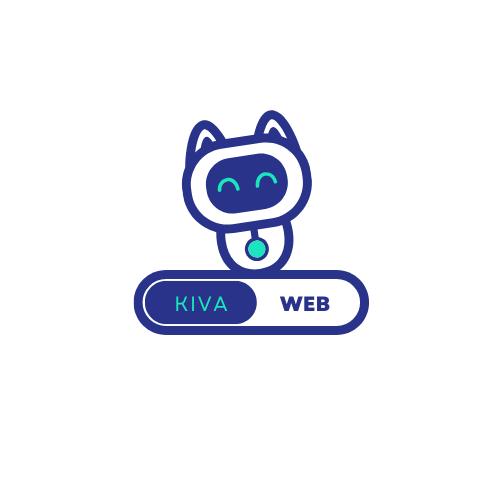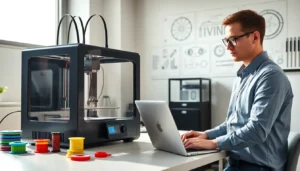Imagine a world where a simple press of a button can bring vibrant, complex designs to life. Color 3D printing is not just a fantasy, it’s a rapidly evolving reality that’s reshaping manufacturing and design as we know it. If you think 3D printing was cool before, hold onto your hats. The leap into color has made these machines capable of way more than just producing monochrome trinkets. Get ready to jump into the colorful universe of 3D printing technology, where creativity knows no bounds.
Table of Contents
ToggleUnderstanding 3D Printing Technology

To fully appreciate color 3D printing, one must first grasp the fundamentals of 3D printing technology. This ingenious process involves creating objects layer by layer from digital models. It starts with a Computer-Aided Design (CAD) file. The digital blueprint feeds into a 3D printer, which then meticulously deposits materials, often plastic, resin, or metal, until the desired shape emerges.
What makes color 3D printing stand out from traditional methods is its capability to blend multiple colors during the printing process. This is achieved through various techniques that allow for intricate designs and rich details, transforming a once dull one-color output into a vibrant masterpiece.
Developments in this field have made it more accessible and versatile than ever, paving the way for innovations across several industries.
Key Methods of Color 3D Printing
There are a few primary methods that define color 3D printing, each with unique capabilities and advantages.
Fused Deposition Modeling (FDM)
FDM is one of the most prevalent techniques, especially for enthusiasts and small businesses. It employs thermoplastic filaments that are colored and then melted down, layer by layer, to create 3D models. Multiple filaments can be utilized to achieve a spectrum of colors and finishes, giving designers a remarkable level of control over their projects.
Selective Laser Sintering (SLS)
SLS operates by using lasers to fuse powdered materials together, allowing for complex geometries and color integration. While traditionally limited in color, advancements have led to techniques that incorporate dyes into the nylon powder, resulting in full-color outputs. This method is often favored for industrial applications, thanks to its strength and durability.
PolyJet Technology
PolyJet takes color printing to a whole new level. This approach applies photopolymer resin in layers and hardens them using UV light. The result? Stunning, smooth finishes with the ability to produce intricate details and a full range of colors. Ideal for prototyping, it indeed checks all the boxes for precision and aesthetics.
Applications of Color 3D Printing
The rise of color 3D printing has opened up exciting possibilities across various sectors.
Healthcare
In the medical field, practitioners use color 3D printing to create anatomical models that enhance surgical planning. These vibrant models improve understanding and communication, crucial elements in high-stakes surgeries.
Automotive
For automotive design, color 3D printing speeds up the prototyping phase by allowing engineers to visualize and test components in full color. This ability significantly reduces time and cost in product development.
Fashion Industry
Surprisingly, the fashion industry is also getting into the act. Designers leverage color 3D printing to create custom accessories and intricate patterns that would be impossible to produce with traditional methods. Who knew that a 3D printer could be a fashion designer’s newest best friend?
Benefits of Color 3D Printing
What makes color 3D printing more than just a passing trend? Here are several advantages that keep this technology at the forefront of innovation:
Customization
Flexibility in design emerges as a primary benefit. Manufacturers can create tailored products or prototypes that meet specific client requirements. Standardization fades away as every piece can be uniquely designed and produced.
Cost-effectiveness
Even though the initial investment in technology, color 3D printing can significantly cut costs in the long run. With reduced waste and faster turnaround times, companies save both time and money on production processes.
Enhanced Creativity
Color 3D printing empowers artists and engineers alike to unleash their full potential. Vibrant colors and intricate details allow for artistic expression in ways conventional manufacturing cannot replicate.
Challenges in Color 3D Printing
As innovative as color 3D printing may be, it’s not without its setbacks.
Material Limitations
One of the main challenges lies in material compatibility. Not all materials can seamlessly integrate into color printing processes. This hampers options for some industries that rely on specific properties for their products.
Technical Complexity
Color mixing and achieving uniformity can be tricky. Issues may arise when transitioning from one color to another, leading to unexpected results. The technical know-how required can be a barrier for smaller companies just beginning to explore this technology.
Scale Production
While color 3D printing is fantastic for prototyping, scaling up to mass production remains a challenge. Companies must weigh the benefits against the potential downtime and costs involved in larger runs.
The Future of Color 3D Printing
Looking ahead, color 3D printing appears poised to influence future manufacturing methods substantially. Enhanced technology will likely lead to faster printing speeds, higher resolution outputs, and wider material compatibility.
Emerging trends suggest that we are moving toward more sustainable practices as well. Recycling materials and utilizing biodegradable options are becoming integral in 3D printing conversations. As more industries embrace green technology, color 3D printing will naturally evolve to meet these demands.
Also, integration with artificial intelligence could streamline the design and production process, creating innovative solutions that push the boundaries of creativity.










